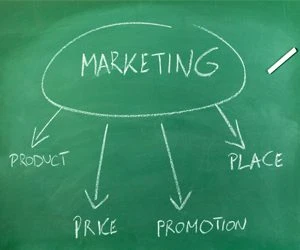The evolution of igaming acquisition

Alana Levine of Income Access traces the development of acquisition strategies from the Millennium to the present day, and sees spiralling PPC costs driving greater interest and investment in other channels in 2017.
The UK gambling market is today dominated by igaming. The sector’s gross gambling yield (GGY) of £4.5 billion for the 2015-2016 period exceeds the separate GGY for the country’s retail bookmakers and the National Lottery, according to the UK Gambling Commission.
While the market is bigger than ever, competition is also unprecedented. Brands wanting to grow market share are facing an increasing challenge. To gain an advantage, a forward-thinking acquisition strategy is essential.
As we mark our 15th year in the igaming space, we take a look back at the evolution of marketing in the sector and consider how operators can develop a 2017 strategy that position their brands for the future.
Search integral to igaming’s early success
It has now been more than 20 years since the launch of the first online sportsbook in 1996. Traditional British bookmakers rapidly recognised the internet’s potential, with William Hill launching an online brand two years later, followed by Ladbrokes in 2000 and Paddy Power in 2004.
As well as leveraging offline marketing, these established operators promoted their new online brands via the then-new digital marketing channels of organic and paid search. Search engine marketing was even more central to the acquisition strategies of the online-only sportsbooks and casinos that began emerging in the early 2000s.
By 2004, Google dominated the search engine market with a 41% share of searches, according to Net Applications. Search engine optimisation (SEO) became a powerhouse marketing strategy, with experts tailoring strategies to react to the search giant’s frequent algorithm updates and developing long-tail keywords tailored to their brands’ unique selling points.
Despite Google’s mutability, SEO remained a viable channel for igaming brands in contrast to paid search. After AdWords’ launch in 2000, the search company restricted pay-per-click (PPC) ads for online gambling just four years later. The prohibition lasted until late 2008, when UK-targeted PPC ads were again permitted.
A residual effect of Google’s paid search lockdown was an opportunity for affiliate marketing to flourish. The channel emerged with affiliate programmes for online poker brands amid the ‘poker boom’ that started in 2003.
Then online bingo and casino operators began leveraging affiliate marketing. Also driven by WordPress’s launch in late 2003 and the subsequent blogging revolution, affiliate marketing had become a key element in operators’ acquisition strategies by the time of Google’s 2008 PPC volte-face.
igaming marketing has always been driven by users’ changing digital preferences. By the late 2000s, social media’s strong popularity opened up a new channel for operators. This was formalised in 2008, when Facebook rolled out its business pages and adverts, followed by Twitter’s unveiling of its ‘Promoted Tweets’ in 2010.
If social media provided brands with an additional acquisition channel, another shift in technology and users’ preferences revolutionised the entire igaming experience. The launch of the first iPhone in 2007, followed by the iPad in 2010, were mobile gaming’s foundational events.
In subsequent years, smartphone and tablet usage rose exponentially. This shift culminated in Google’s mobile coronation in 2015, when its Mobilegeddon algorithm update penalised mobile-unfriendly sites.
The tipping point for mobile gaming
The year 2015 was a tipping point for mobile gaming. That year, online poker brands like PKR saw mobile acquisitions cross the 50% threshold, while sportsbooks such as Coral reported that player sign-ups via smartphones and tablets had exceeded 55%.
Mobile uptake has considered apace in 2016, with 85% of Gaming Realms’ content being accessed by mobile players, according to company founder Simon Collins. He forecasts that will rise to 95% in 2017.
In the context of this device shift, a native app is now as mandatory for operators as a mobile website, especially when users’ preferences are considered. According to Smart Insights, users spend approximately 90% of their mobile time in-app, with only a fraction surfing the mobile web.
The development of an app does require a significant investment from operators. Costs for a moderately sophisticated app can reach £50,000, according to Abbacus Technologies. However, such an investment has strong ROI potential, considering that an app opens up a new acquisition channel for operators – app stores.
According to Apple, 65% of its hosted apps are discovered by users’ searches in the App Store. By focusing on app store optimisation (ASO) – maximising their app’s search visibility through targeted keywords and enticing users to install with impactful written descriptions, compelling screenshots and preview videos – operators can introduce their brands to an untapped audience.
However, ASO results can be as erratic as its older online cousin, SEO. Fortunately, Apple has started introducing its equivalent of PPC – App Store advertising (ASA). In October, the firm unveiled Search Ads, allowing US app developers to promote their apps within App Store search results.
Like Google’s AdWords, App Store ads work on a bidding system with relevance to users’ search terms improving their ranking.
Following its introduction into the UK market in 2017, ASA will provide a powerful complement to ASO. Similar to PPC’s relationship to SEO, operators can use ASA to rapidly raise their App Store profile.
They can reduce their paid search spend when their app installs and player reviews and feedback – these feed into Apple’s search algorithm – are sufficient to allow a shift of focus onto the lower-cost channel of ASO.
High PPC costs drive interest in other marketing methods
Given ASA’s emergence, is PPC still relevant in 2017? Since Google opened the digital door on paid search for igaming in 2008, acquisition costs have risen steeply.
All of the 10 most expensive keywords for UK AdWords ads are igaming-related, with costs per click (CPC) varying from £122 to £149, according to SEMrush.
With the high investment required for PPC, savvy operators will diversify their marketing mix in 2017 with a greater focus on affiliate marketing.
The channel’s performance-based model ensures that operators only pay for players who actually convert.
Just as importantly, affiliates in 2017 are no longer solitary webmasters with sites focusing almost exclusively on banner ads.
While around two-thirds of affiliates (69%) surveyed recently by Income Access still leverage this approach, today’s affiliate sites also commonly feature value-added content such as news, match previews and casino game reviews. An overwhelming number of affiliates – 83% surveyed – have adopted this content-focused approach.
Amid a consumer landscape where ‘pull’ rather than ‘push’ marketing is more effective, affiliates can serve as a space for brands to host insightful and user-driven, valued-added guest op-eds and advertorials.
The content can be complemented by banners ads targeted very specifically to players, according to their location, language, date and time of day, to help maximise conversions.
Such native advertising campaigns can also be developed with high-traffic igaming publishers, many of which were once affiliates. These publishers today boast the traffic to demand media buy deals from operators on a cost per mille (CPM) impressions basis.
Traditionally, media buying was highly effective for brand building due to the high levels of traffic to which an ad could be served, but this was compromised by the erratic conversions rates of advertising based on impressions rather than performance.
However, in 2017 operators can ensure their media buys are highly targeted through programmatic advertising and real-time bidding (RTB) using ad exchanges.
Automating the process, programmatic advertising and RTB allow an operator’s ads to be served very specifically to web users according to demographic info (age, gender), interests (based on browsing history) and location, and across a wide range of relevant high-traffic websites (from poker news publishers to the sports webpages of British tabloids).
A sportsbook can now target Chelsea fans in South London with a banner promoting an upcoming match by serving this on the Daily Mirror’s Chelsea FC news page. If the Blues fan clicks through but doesn’t convert, the brand can then retarget him as he moves across the web, reserving the ad to him at other sites he frequents.
Media buying in 2017 using today’s sophisticated targeting and retargeting capabilities means the channel is becoming as cost-effective as affiliate marketing, which is itself diversifying to provide brands with a broader canvas for content marketing and other collaborative digital marketing strategies.
With the App Store advertising’s introduction into UK-facing brands’ marketing mixes this year, operators have the acquisition tools to ensure that the industry’s growth continues to set records in 2017 and beyond.
Alana Levine is senior manager of business development and marketing services at Income Access.
